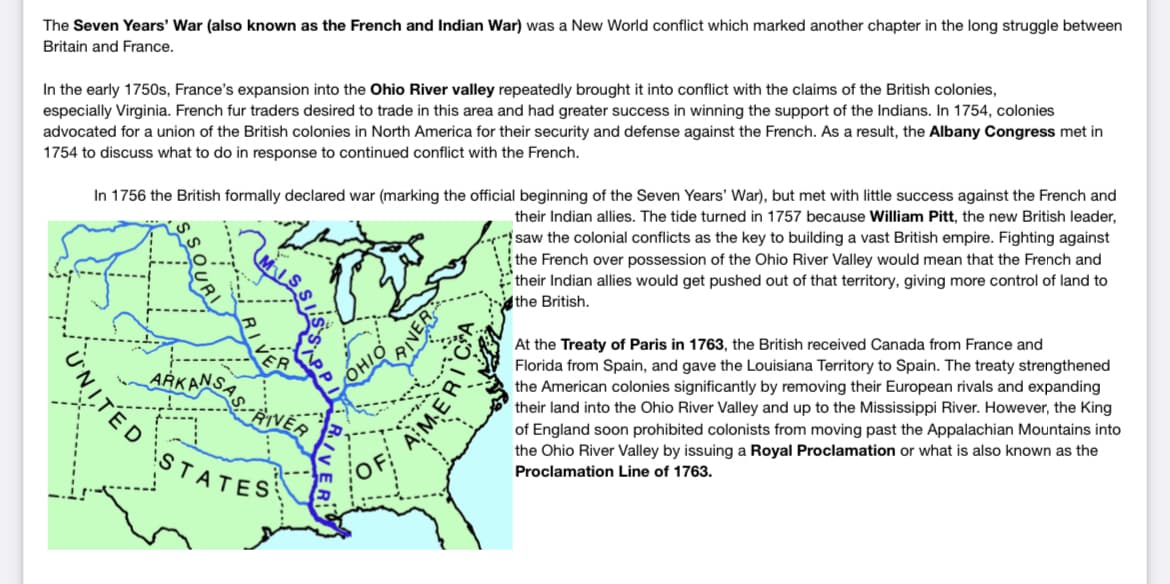What was the significance of the Ohio River Valley? 2. Why did the Albany Congress convene in 1754? 3. What was the impact of the Treaty of Paris in 1763 on American colonies? 4. What was the Royal Proclamation/Proclamation Line of 1763? How might this anger colonists?
What was the significance of the Ohio River Valley? 2. Why did the Albany Congress convene in 1754? 3. What was the impact of the Treaty of Paris in 1763 on American colonies? 4. What was the Royal Proclamation/Proclamation Line of 1763? How might this anger colonists?
Related questions
Question
1. What was the significance of the Ohio River Valley?
2. Why did the Albany Congress convene in 1754?
3. What was the impact of the Treaty of Paris in 1763 on American colonies?
4. What was the Royal Proclamation/Proclamation Line of 1763? How might this anger colonists?

Transcribed Image Text:The Seven Years' War (also known as the French and Indian War) was a New World conflict which marked another chapter in the long struggle between
Britain and France.
In the early 1750s, France's expansion into the Ohio River valley repeatedly brought it into conflict with the claims of the British colonies,
especially Virginia. French fur traders desired to trade in this area and had greater success in winning the support of the Indians. In 1754, colonies
advocated for a union of the British colonies in North America for their security and defense against the French. As a result, the Albany Congress met in
1754 to discuss what to do in response to continued conflict with the French.
UNITED
In 1756 the British formally declared war (marking the official beginning of the Seven Years' War), but met with little success against the French and
their Indian allies. The tide turned in 1757 because William Pitt, the new British leader,
saw the colonial conflicts as the key to building a vast British empire. Fighting against
the French over possession of the Ohio River Valley would mean that the French and
their Indian allies would get pushed out of that territory, giving more control of land to
the British.
ARKANSA
STATES
'O
AMER
At the Treaty of Paris in 1763, the British received Canada from France and
Florida from Spain, and gave the Louisiana Territory to Spain. The treaty strengthened
the American colonies significantly by removing their European rivals and expanding
their land into the Ohio River Valley and up to the Mississippi River. However, the King
of England soon prohibited colonists from moving past the Appalachian Mountains into
the Ohio River Valley by issuing a Royal Proclamation or what is also known as the
Proclamation Line of 1763.
Expert Solution
This question has been solved!
Explore an expertly crafted, step-by-step solution for a thorough understanding of key concepts.
This is a popular solution!
Trending now
This is a popular solution!
Step by step
Solved in 2 steps
